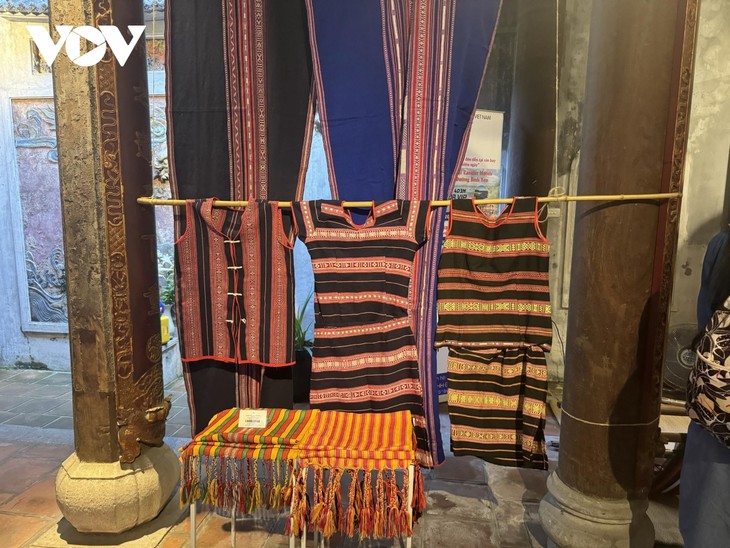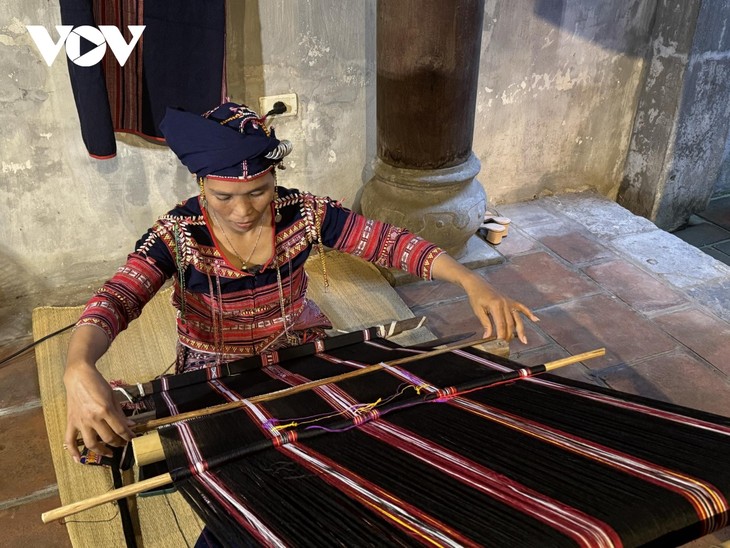(VOVWORLD) -Xi Thoai is a brocade weaving village of the Ba Na ethnic group in Xuan Lanh commune, Dong Xuan district, Phu Yen province. It’s the first traditional craft village in that ethnic minority area. The craft was fading, but has recently been revived thanks to State incentives.
 Brocade clothes are made by Xi Thoai brocade weaving village Brocade clothes are made by Xi Thoai brocade weaving village |
Xi Thoai brocade weaving village has a 79-year history. Originally households created brocade items only for their own use, but as Xi Thoai brocade gained recognition for its beauty, it became a sought-after item in Xuan Lanh commune and the neighboring districts of Son Hoa and Song Hinh.
A distinctive feature is symmetric cube patterns inspired by nature and reflecting the Ba Na’s worldview of the cosmos, heaven and earth, yin and yang, mountains, fauna, and flora. The patterns depict the natural world and scenes of local daily life.
So Thi Chuyen, a brocade artisan who lives in Xi Thoai village, said that unlike machine-made items, hand-woven items in Phu Yen have two sides.
“Men and women's costumes have similar patterns, but men wear short-sleeved jackets while women wear long-sleeved blouses,” said Chuyen, adding, “Women's costumes have accessories made from the Ca Liec tree, whose seeds are dried and then attaching to the shirts. Women also wear a hat wrapped around their hair. These outfits are worn on holidays. It can take more than a month to weave one outfit.”
 Artisan So Thi Chuyen demonstrating traditional weaving techniques Artisan So Thi Chuyen demonstrating traditional weaving techniques |
In recent years, thanks to state policies to support rural industries, brocade weaving in Xi Thoai village has reached a new development level.
When it was revived in 2000, the brocade weaving group had 16 women skilled and passionate about weaving and embroidering. Now more than 40 women are involved. The communal house has become a place for villagers to gather after working in the fields.
The technique of mixing colors for multicolored brocade panels has been handed down to younger artisans, so the elders no longer worry about their traditional craft disappearing.
La O Thi Tim, a Xi Thoai villager, said that she is very happy that brodcade weaving has been revived. “My grandmother and mother taught me and my younger sisters the craft, and I’ll hand it down to my children,” Tim recalled.
Last year, the provincial People's Committee recognized Xi Thoai as a traditional brocade weaving craft village. The Dong Xuan district administration has increased communications to raise people's awareness about environmental protection and improving product quality.
Deputy Chairman of the district People's Committee Tran Quoc Huy said that the locality has sent artisans on learning trips to other provinces and continue to seek investment to help the locals sell their products, increase their income, and maintain the craft.”
An event to introduce Xi Thoai brocade is under way at the Hanoi Old Quarter Heritage Information Center. Visitors can watch demonstrations of brocade weaving by artisans, learn the proper way to wear Ba Na ethnic costumes, and learn the meaning of the brocade patterns and accessories.
Cultural researcher Tran Doan Lam, a resident of Hanoi’s Ba Đình district, said that ethnic costumes are an intangible cultural heritage and identify the ethnic group that wears them.
“The Bana costume is different from the Mong costume, as are the accessories, shawls, silver and gold jewelry, and even the way they wear the costumes,” said Lam.
Phu Yen province plans to make Xi Thoai a community tourism destination to promote Ba Na brocade weaving and boost the local economy.